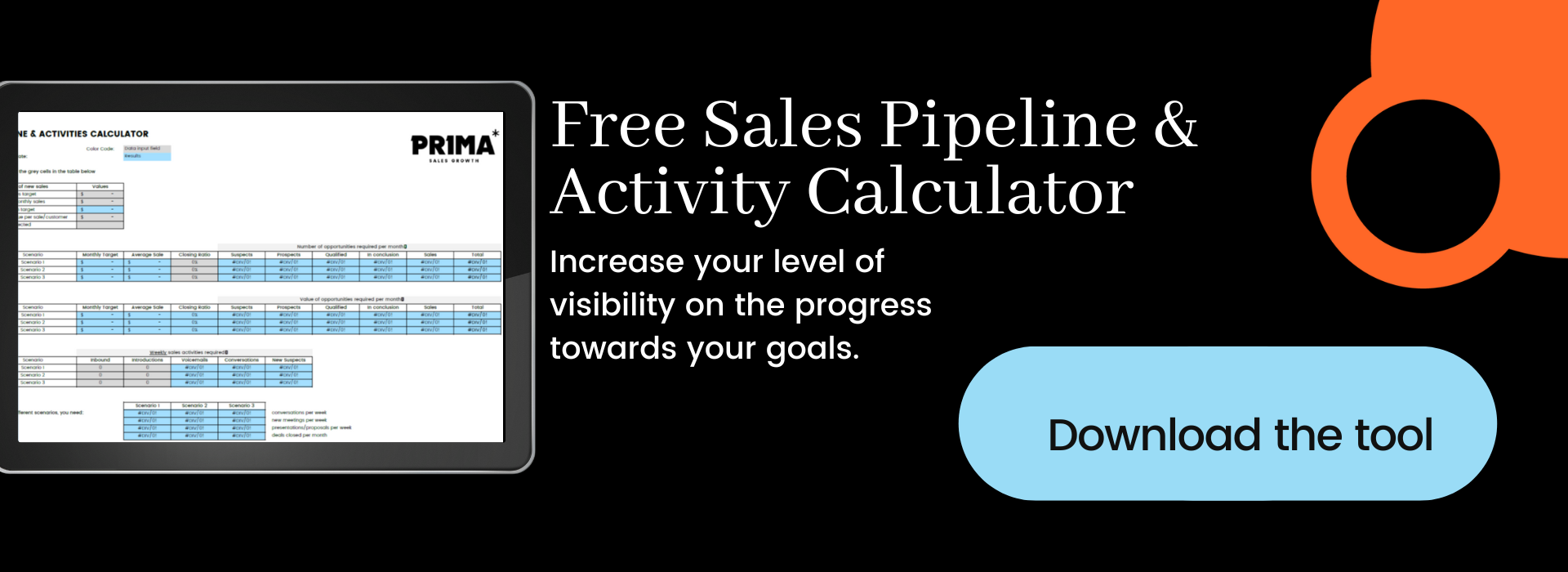 I see many sales leaders struggling to establish reliable sales forecasts for the coming year. This is a very difficult exercise that leaves all managers and sales leaders with headaches.
I see many sales leaders struggling to establish reliable sales forecasts for the coming year. This is a very difficult exercise that leaves all managers and sales leaders with headaches.
However, you can improve the quality of your forecasts and avoid some very common mistakes.
1. Consider unusual gains as reproducible
It can happen that a salesperson wins an exceptional sale that will boost the company’s revenue. However, some sales managers make the mistake of thinking that other big opportunities in the pipeline will close when they make their forecasts. This is a mistake.
Unusual gains should not be taken into consideration, as it is almost impossible for a salesperson to be able to repeat the same stunt for a second year in a row. It is possible that the sales rep worked on the opportunity over a period of two years, for example.
To be more accurate in your sales forecast, rely on typical opportunities. This will also allow your team to stay focused on profitable sales activities instead of investing time and effort in exceptional opportunities that are less likely to lead to sales.
2. Poor knowledge of the market
A poor knowledge of the market can take two forms:
1. In relation to existing customers
Sales forecasts are often based on what customers have purchased in previous years. However, by limiting yourself to this exercise, you are not digging to see if other opportunities exist for these clients. You do not encourage the customer to question whether there is another problem that you could solve, either directly with the customer or with a subsidiary, for example.
You don’t push your salespeople to grow existing accounts, which probably deprives your company of a significant volume of sales.
2. In relation to market shares
It is often difficult to assess the market potential and your actual market share. For example, if you aim to gain 5% of the market shares held by your competitors, how do you know what revenue this represents? To answer this question, it is necessary to have a precise knowledge of your potential market.
3. Not considering your products’ life cycle
If you plan to launch a product during the year, you must consider the product life cycle curve and the adoption curve. Indeed, this step is crucial if you want to be realistic about the sales of new products. The same applies to products in a phase of decline.
Moreover, the decline may be more sudden than expected, which distorts sales forecasts.
 Source: https://www.assignmentpoint.com/business/marketing-business/product-life-cycle.html
Source: https://www.assignmentpoint.com/business/marketing-business/product-life-cycle.html
4. Not following up on forecasts and objectives with the representatives
Your salespeople must understand the importance of having a sales funnel that meets the 4 health criteria at all times:
- Quality of opportunities
- Quantity of opportunities
- Balance
- Movement
-1.png)
The sales pipeline must be the main indicator to give you the right picture regarding forecasts and goals. That’s why you need to do regular pipeline reviews with each sales rep. This helps them to be more aware of the situation in regards to the goals and to hold them accountable.
From experience, each time I led my sales teams to exceed objectives, I had succeeded in holding each representative accountable.
5. Readjusting objectives during the year
I regularly see sales managers who revise sales objectives throughout the year. Whether the objectives are raised or lowered, there is a negative impact on the sales people’s activities.
Establishing a concrete, precise and realistic game plan is already a demanding and difficult task for your representatives. Now, imagine their perception of the matter if, in addition, they know that their game plan could be reconsidered.
Beware of the “flavour of the month” trend. This type of promotion often diverts attention away from regular sales activities and has a negative impact on the achievement of sales forecasts.
6. Use data from a CRM that is not up to date
Few representatives have a perfectly up-to-date CRM. This is often due to the tool itself, which requires a lot of time for inputting information.
So what is the point of your CRM if the majority of your representatives do not use it properly? One thing is clear: you will not be able to use it to make your sales forecasts. Not to mention that in many CRMs, there are too many elements crucial to good forecasts that are left to the subjectivity of the person who fills it. These elements are:
- The probability of closing the sale;
- The moment the sale will be concluded;
- The value of the sale.
If you want to avoid such a problem, make sure you have a clear sales process, with steps that are precise and well defined.
Takeaways
It is very easy to make mistakes in sales forecasts, yet the exercise is essential. This year, work to eliminate as many possible causes of inaccuracies in your forecasts as you can.
Cover photo credit: fr.freepik.com






